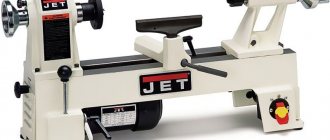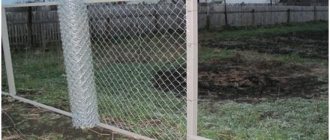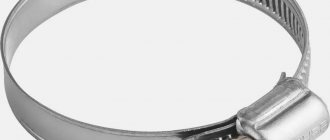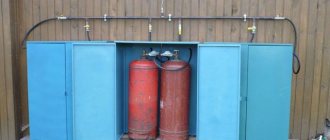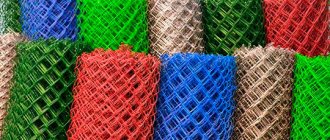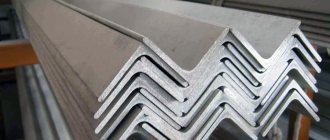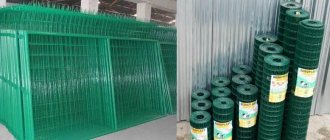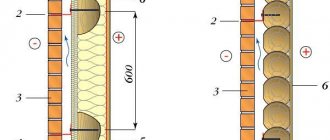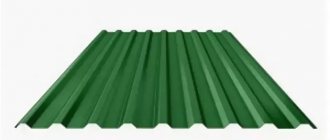Preventing cracks and destruction, achieving durability and strength of the structure is the main task when building brick houses, partitions, partitions, pillars and fences. One way to solve this problem is by using masonry mesh. Dimensions distinguish them from each other; they are made from various raw materials with different production technologies.
The mesh not only enhances the ability of an individual element of the structure, but also strengthens the entire structure as a whole.
Product characteristics
Masonry mesh is a product with wire rods of different diameters welded perpendicularly. The structure of the product makes it possible to achieve adhesive strength of the raw materials used during construction. The mesh for masonry has a wide variety, and its characteristics depend on the technical conditions and state standards, which are taken as a basis by the manufacturer during the production process.
Masonry welded mesh must comply with GOST 23279−2012. It is distinguished by high penetration points and accuracy of the geometric dimensions of the cell and card.
The product is divided according to the diameter of the rods:
- easy;
- heavy.
Heavy products with a rod in one direction have a diameter of more than 12 mm. Light mesh with transverse and longitudinal rods is made with a diameter of no more than 10 mm, but not less than 3 mm inclusive.
According to the position of the working fittings:
- in longitudinal;
- in transverse;
- in both directions.
According to the shape of the cells, the grid is:
- square;
- rectangular.
Cell sizes are available in the range from 30 mm to 250 mm with a maximum rod diameter of 8 mm and a minimum of 3 mm. It should be taken into account that the smaller the cell size, the greater the strength.
By manufacturing method:
- flat (maps);
- roll
Cards can be square or rectilinear in shape, from 1.5 m to 2 m long. Their weight is an indicator of quality.
Rolled ones are stretched in length from 10 m to 23 m. The width of the roll varies from 120 mm to 500 mm.
The weight of the product depends on the size of the cell and the raw materials from which the product is made.
According to GOST, heavy meshes are divided into three types according to their parameters, and light ones into two. Each type of product is distinguished by its width, length, diameter, rod pitch and dimensions.
The raw material for the manufacture of a heavy product is hot-rolled reinforcing steel rod or thermomechanically hardened steel rod, and for a light product it is reinforcing wire.
Dimensions according to GOST 6727-80
This material is made from wire with a diameter of 3 to 6 mm. Depending on the application of the structure and masonry material, parameters are selected. The cell sizes can be the following (in millimeters): 40*40, 50*50, 100*100, 150*150 and even 200*200. The standard sheet size is 200*300 cm. These are the optimal characteristics that provide the required strength when performing various types of work.
The size of the cells is selected based on the application of the design. The largest size 200*200 is used to reinforce large areas of concrete. And small 50*50 strengthen brick and other types of masonry. When selecting this parameter, it is important to be guided by the following rule: the smaller the cell, the higher the strength of the structure.
Another parameter is the width of the material. It must be selected so that after trimming the length of the transverse elements is a maximum of 7 mm. The width of the reinforcing structure itself should be 1 cm less than the width of the wall. This is important to prevent the occurrence of protrusions on the sides of the structure. Otherwise, the mesh will come into contact with moisture and precipitation, which will lead to corrosion.
Product for masonry
When working with bricks, the mesh for masonry makes it possible to significantly reduce the consumption of mortar, prevent its displacement and increase the service life without repairing the constructed structure.
The adhesion between the mortar and the reinforcement is ensured by the corrugated surface of the product. When laying masonry, the mesh is used for transverse reinforcement. The process of strengthening the structure:
- To adhere to the mortar, the mesh is laid on the previous row of building bricks.
- The entire product is covered with mortar throughout the site for subsequent bricks.
- The brick being laid is pressed with force into the mortar with mandatory coordination of its location in relation to the entire row of masonry. Excess solution is removed.
- The mesh, under the action of clamping it with rows of bricks, is connected at the seams with the mortar.
- After the mortar hardens, the product, together with the entire masonry, becomes a single whole, which gives the structure greater reliability and strength.
The mesh used for masonry must comply with the recommendations of construction documentation, codes and regulations. Basically, a lightweight mesh with a wire diameter of up to 5 mm is used for brickwork. The product can be produced by resistance spot welding or made from cold-rolled perforated sheet.
In some cases, when it is impossible to strengthen the structure by other means, the use of masonry mesh is a necessary measure.
It is used:
- In the case of using brick or stone with weak strength and rigidity characteristics.
- When building two walls from a material with different mechanical characteristics and mortar creep.
- In the process of constructing high-rise buildings with a masonry row thickness of more than two bricks.
- In conditions of construction of structures at low temperatures, when the pace of construction is high and the adhesion speed is low.
- When creating structures from lightweight materials with possible voids.
For each case, you need to make a decision separately, since the type and size of the product, as well as the method of laying, depend on this. For example, for low-rise construction, according to set of rules No. 15.133330.2012, the grid is laid out every three rows of bricks.
Types and characteristics of samples
On trading platforms for reinforcement you can find various types of cellular fabrics. Let's consider which mesh to use for laying bricks or blocks. Three main groups of materials are represented by the following solutions:
- Metal.
Samples of metal mesh Source m-chel.ru
For production, low-carbon cold-rolled steel blanks with a cross section of 3, 4 or 5 mm are used. According to GOST 6727 from 1980, rolled metal is marked as VR-1 - wire with a periodic cross-section. The elements are connected into a mesh fabric point by point using semi-automatic welding equipment. Finished products can additionally be galvanized (coating thickness is about 8 microns). On many samples, to ensure good adhesion of the metal to the masonry mortar, the rods have shallow notches.
- Basalt.
An example of a basalt fabric for masonry reinforcement Source legobeton.ru
The reinforcing fabric here is made from fibers that are formed from natural stone of volcanic origin. To tie together threads with a thickness of over 5 mm, clamp-type ties made of durable polyethylene are used. Additionally, by gluing, fine-grained mineral chips can be applied to the material in order to improve adhesion to the masonry mortar. The advantage of such a mesh for brickwork over its metal counterpart is mainly in its resistance to corrosion, environmental friendliness and durability.
- Fiberglass. This is an alternative, relatively low-cost solution for the construction of structures with low operational load. It is sold in rolls of various widths (usually 500, 1000 and 2000 mm). That is, you can find ready-made strips that you don’t have to cut. The plastic sheet is produced with a reinforcing polymer coating and has a monolithic structure.
Fiberglass mesh Source stpulscen.ru
Metal masonry mesh for blocks lasts more than 15 years. The material is able to withstand heavy loads (the higher the indicators, the smaller the cell size). Alternative options differ not only in their chemical inertness, but also in their lower ability to conduct heat. Craftsmen also highlight low weight, simple cutting, low cost and, to varying degrees, elasticity and tensile strength.
See also: Catalog of construction companies that have their own production of materials and components for the construction of houses
Types of masonry mesh
The use of mesh for masonry is varied. Hence the types of product that differ in purpose and manufacturing methods .
- Polymer. For screeding floors, applying thick layers of plaster, and reinforcing floors or road surfaces, a mesh made from basalt fiber is used. The product has a number of advantages. It is not subject to corrosion, which increases its service life. Due to its elasticity, it can be easily adjusted to the installation location, does not conduct electric current and has good thermal insulation properties. Its disadvantage is its low mechanical strength, so it is not recommended for use on load-bearing walls.
- Galvanized. The product is used when pouring floors in multi-storey buildings and foundations for applying plaster and strengthening screeds. The advantage of the product is the absence of a corrosion process from environmental influences, which gives it an aesthetic appearance, for example, when used as a fence. Leaves no traces of rust on contacting surfaces. Galvanized masonry mesh does not lose its structure, it is quite durable with a long service life. For its manufacture, low-carbon steel wire is used, onto which zinc is applied using a hot or cold electrolytic method.
- Plastic. The mesh is made of propylene or compressed polyethylene and, due to its thinness and flexibility, is easy to cut. The product is able to withstand temperatures of at least -55 C ° and maximum +80 C °. Its service life can reach 50 years or more. The raw materials contain compounds and components without harmful impurities, which ensures the environmental friendliness of the product. The product is not afraid of corrosion, does not fade in the sun, and is characterized by low thermal conductivity. Despite its light weight, it is in no way inferior to other types of products, but gives it advantages during transportation and installation. An important advantage is accessibility and budget cost.
When choosing a product, first of all, it is necessary to take into account the scope of application and study the technical documentation, norms and operating rules.
Using welded mesh cards when building a house
When constructing houses or outbuildings from aerated concrete blocks, welded mesh in cards is used when laying blocks to increase the mechanical strength of the masonry. Its use in construction work is reliable protection against cracks in the walls, which may appear due to shrinkage of the building and significant temperature fluctuations.
Features of using masonry metal mesh in cards:
- Reinforcement can be omitted only if the outer wall is laid from blocks of the first category, when they are used for a format, for example, D500 (625x400x250 mm) with a strength of B3.5.
- When building a house with a thickness of 2 blocks (200 mm), the mesh is laid with glue or mortar every 3-4 rows.
- If blocks of the third category with strength B2 are used, and mortar rather than glue is used for masonry, then reinforcement with metal mesh is a prerequisite. The material is laid every 3 rows of blocks.
- The lower the strength of the products, the more often the laying step is used. During installation, the mesh should have a width 6-8 mm greater than the thickness of the wall. This approach allows you to control the correct placement of sheets.
The mesh is also laid if a building made of aerated concrete blocks is faced with brickwork. In this case, its edges should not reach the outer edge of the bricks by 6 mm, so that jointing can be done.
It is advisable to use steel mesh in cards for reinforcing the walls of the first floor in multi-story buildings. It is also important to use it at the junction of door and window structures.
The reinforcing mesh is laid on concrete or adhesive mortar; in the second case, the thickness of the seam is smaller, it does not exceed 3 mm. During construction work, the sheets are joined with an overlap of 2-3 cells.
Product manufacturers
Masonry mesh is widely used in construction, mechanical engineering, mining and agriculture. Therefore, the market for such products is characterized by a high share of large players. Nevertheless, there is fierce competition in this segment, but this does not prevent the opening of new enterprises and expanding production at existing sites:
- OJSC Severstal-Metiz. This is an international group of companies specializing in the production of metal products with production sites in different regions of Russia. Thus, on the basis of the Oryol and Cherepovets factories, the UniFense enterprise was created, producing corrugated, hexagonal, woven, welded and woven meshes. There is a production line for products with HDPE coating and zinc coating made in Italy. The enterprises have modern machines and high-performance lines.
- Mechel PJSC. There are production facilities of this leading company in the metallurgical industry in 11 regions of Russia. All enterprises operate in the same production chain - from the extraction of raw materials to the release of finished products. JSC "Vyartsila Hardware Plant", which is part of this holding, produces products from low-carbon, thermally untreated uncoated and polymer-coated wire, as well as steel woven mesh.
- . The company is located in the village of Kuzyaevo, Dmitrovsky district, Moscow region and specializes in the production of welded masonry mesh. The plant is modern; the equipment was launched in 2012. Over the course of several years, we have achieved a wide range of products with various coatings, the quality of which meets modern requirements and is confirmed by certificates.
Each company has its own price level. It is determined both by the enterprise strategy and the size and type of product.
Features of the grid in maps
The mesh in the cards is made from steel rod using resistance welding with cells with clear geometry. This provides the material with such properties as:
- high strength;
- resistance to static loads;
- stable geometric structure;
- formation of a monolithic structure with concrete;
- uniform stress distribution inside the concrete solution;
- reliability of fastening of individual elements (rods);
- good balance between price and technical properties;
- easy gluing due to the application of adhesive;
- ease of transportation and storage.
The smaller the cell size, the heavier the fabric and the greater the load it can withstand. Compared to reinforcement with rods, strengthening masonry using mesh in cards is a cheaper and less labor-intensive method.
Why standardize masonry mesh according to GOST
The descriptions and requirements contained in the state standard determine the quality and, as a consequence, the methods of use of certain products. Such standardization is preceded by multiple theoretical calculations and practical tests, which guarantee, in the recommended application, safety and expected functionality.
For example, GOST 23279-85 for welded steel mesh contains information on the weight (for a certain wire cross-section) of one meter of square material. Exceeding this parameter for a specific mesh may indicate a discrepancy in consumer qualities, namely:
- The metal of the wire does not correspond to that required by GOST.
- As a consequence of p.p. 1, the strength characteristics may be worse.
- Greater weight may completely exclude the possibility of its use, for example, for walls made of foam concrete.
- The lack of chemical inertness required for the conditions of use in construction can also exclude the use of mesh.
Thus, non-compliance of even one of the parameters of the mesh for reinforcement with GOST may make it inapplicable for its functional purpose.

